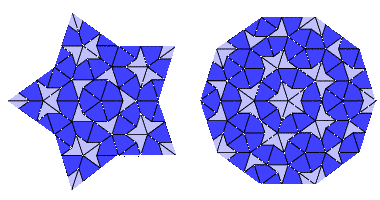
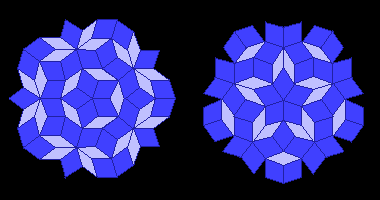
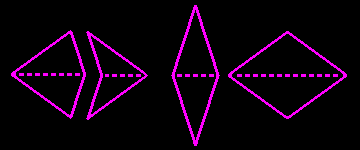
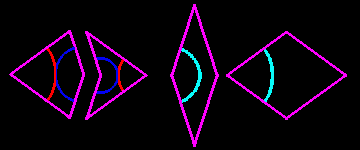
There are many examples of paving with figurative drawings in Maurits Cornelis Escher's work (end of the page).
 |
 |
 |
 |
To get non-periodic tilings of the plane one must use a simple matching rule: tiles have to meet in a way such that each arc of each tile is connected with the arcs on the neighbored tiles. Since both sets use golden triangles, it makes sense that a kite and dart tiling can be translated into a rhombi tiling, and vice versa.
An other example of a tilling of this type designed by Nicolas Hannachi (one my notice an assembling condition).
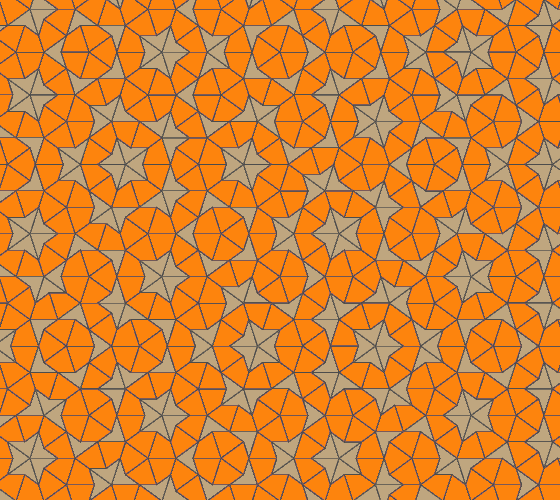 |
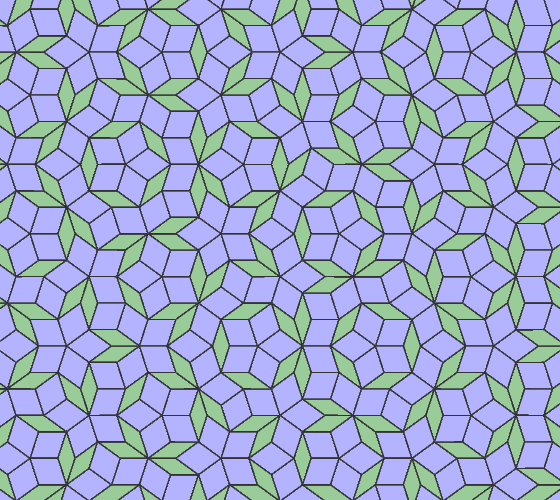 |
Discovered by Roger Penrose in 1974 these tilings have curious properties; among them:
• any finite region of a Penrose tiling appears an infinity of times in any Penrose tiling,
• there are small regions with a 5-fold symmetry,
• if the tiling grows infinitely the ratio of the numbers of tiles in each type tends toward φ!
• a rhombi tilling reveals a pattern of two types of overlapping decagons; the ratio of the two populations is φ!
| references: |
• Penrose tilings by Eric Hwang - Penrose tilings of the plane by Ianiv Schweber
• Penrose tiling applet ( download penrose.jar then open it with Java) • a Penrose tiling generator by J.-L. Sigrist |
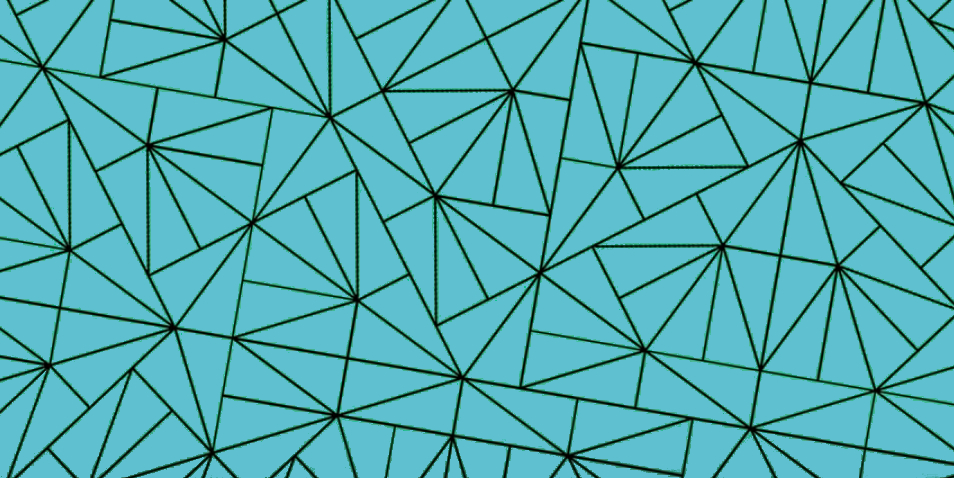 | |
| Divide a right-angle triangle of sides 1, 2 and √5 into five isometric triangles (and similar to the big triangle). Enlarge (factor 2) and divide each of these five triangles in the same way; iterate the process.
We thus obtain a nice aperiodic tiling (no invariance by translation) whose triangles can take an infinity of different directions. Simplicity and beauty! Thank you John Conway. reference: deux minutes pour Jonh Conway (youtube, in French) |
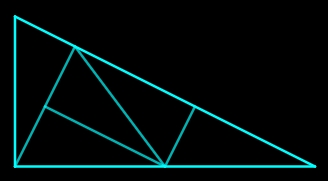 |
reference: "La quête du pavé apériodique unique" by Jean-Paul Delahaye (in French) Pour la Science n°433, November 2013
| In the 1970s Roger Penrose showed that it was possible to tile the plane aperiodically by combining only two different tiles. But do aperiodic tilings with a single tile exist?
Half a century later, in March 2023, a geometry enthusiast, David Smith, created an "einstein", a discovery confirmed by a team of four mathematicians: the "hat", a 13-sided polygon, assembly of eight kites arranged in a hexagonal network. One detail, however, bothered the purists: these aperiodic tilings used hats, some of which were turned over and which could therefore be considered as a second tile. A few weeks later the problem was solved with the creation of a pure "einstein" linked to the hat that its inventors named "spectre". This polygon has 14 sides of the same length and its angles measure 90°, 120° or 180° (starting from the vertex of the flat angle, we have alternately 120° and 90°).
|
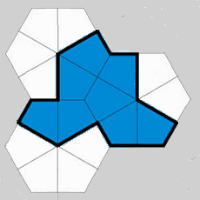
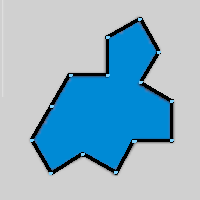 |
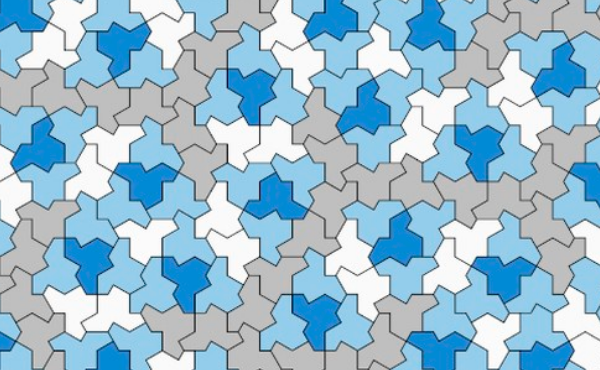 |
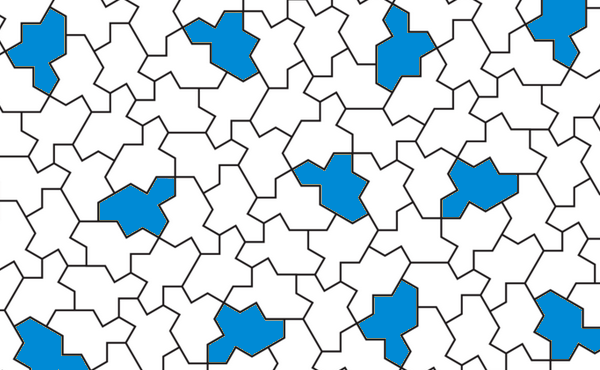 |
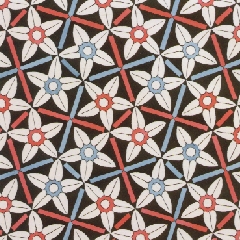 |
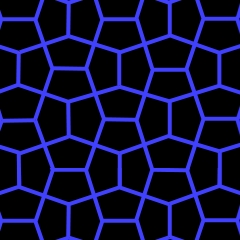 |
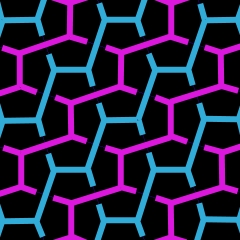 |
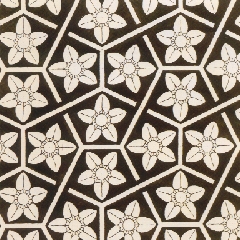 |
| The Cairo tiling in two drawings by M.C. Escher (1967) | |||
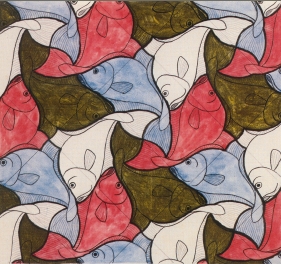 |
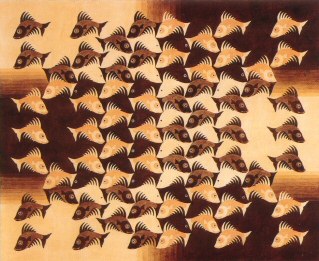 |
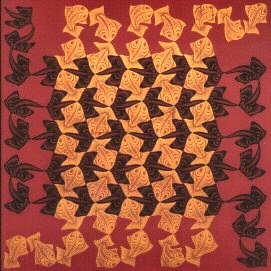 |
| Fishes by M.C. Escher (1938, 1940 & 1943) | ||
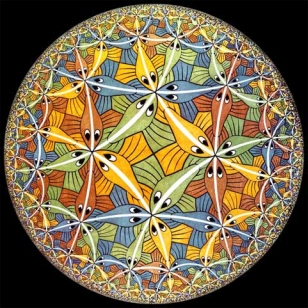 |
Circle Limit III (woodcut by M.C. Escher - 1959) This drawing also depicts a tiling, but here we are in the Poincaré disk, a model of the hyperbolic plane. Another world... • Hyperbolic tessellations by David E. Joyce
| |
home page
 |
convex polyhedra - non convex polyhedra - interesting polyhedra - related subjects | February 2007 updated 01-06-2020 |